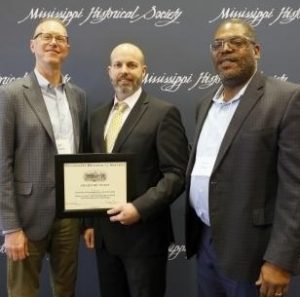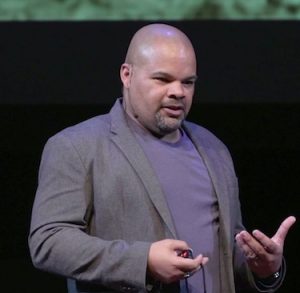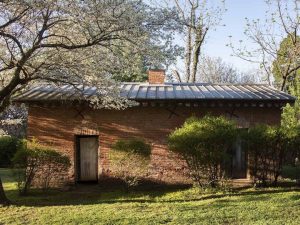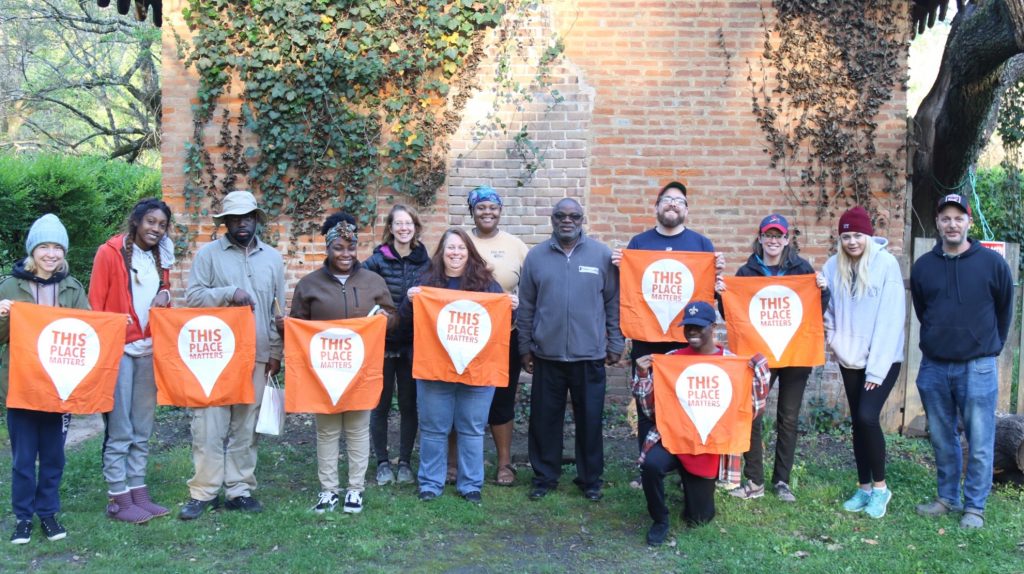
Joseph McGill (center), founder of the Slave Dwelling Project, and UM students and faculty after spending the night in the old kitchen behind Rowan Oak, which once housed enslaved people.

An unknown African American woman (center), almost certainly enslaved, with the family of Professor Edward C. Boynton in 1860.
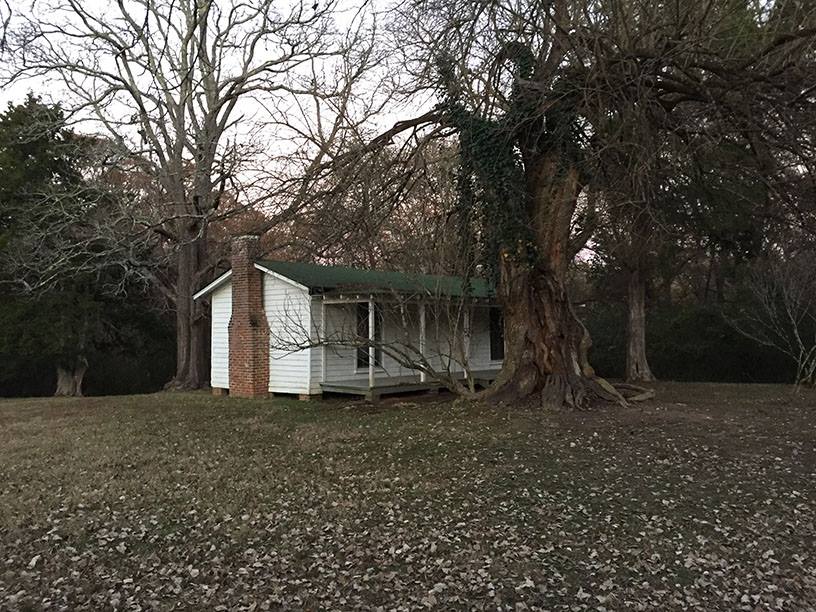
This 1930s servants’ quarters at Rowan Oak was the home of Caroline Barr, a former slave born in the 1840s or 1850s, who cared for William Faulkner when he was a boy and returned to Rowan Oak in the 1930s to help care for Faulkner’s daughter, Jill.
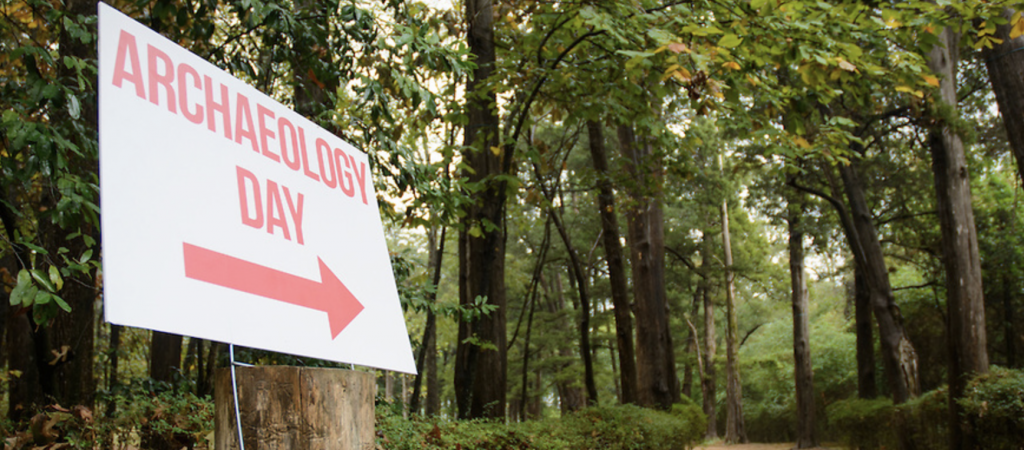
The UM Center for Archeological Research hosts a public archeology day at Rowan Oak to educate the public about the ongoing excavation of slave quarters dating to the antebellum era.
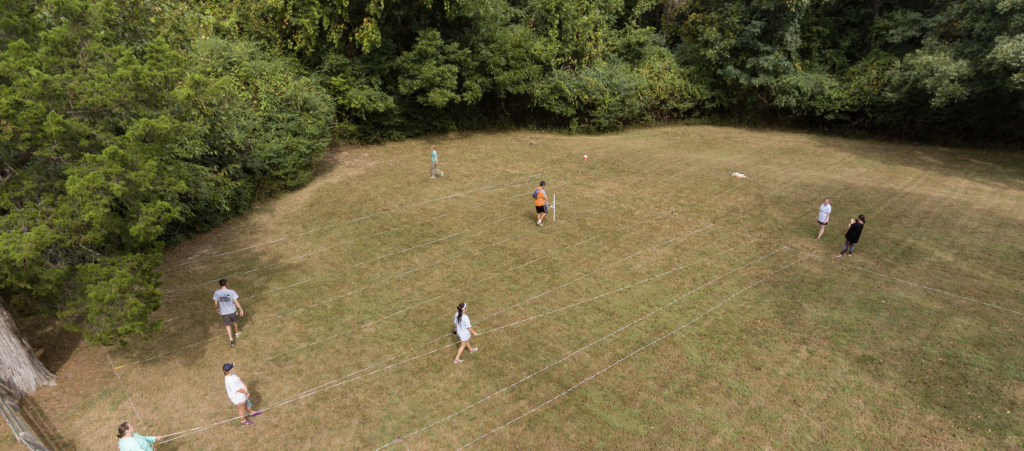
Archaeology students conduct fieldwork at Rowan Oak.
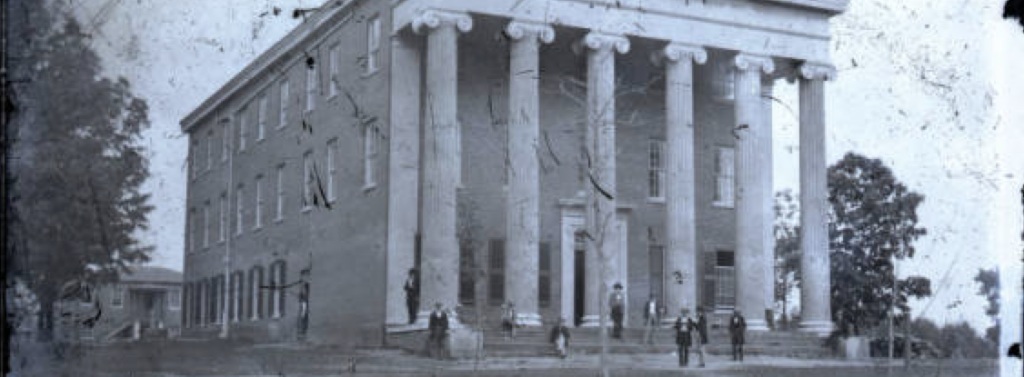
The University of Mississippi's oldest building, the Lyceum, was constructed by enslaved laborers between 1846 and 1848.
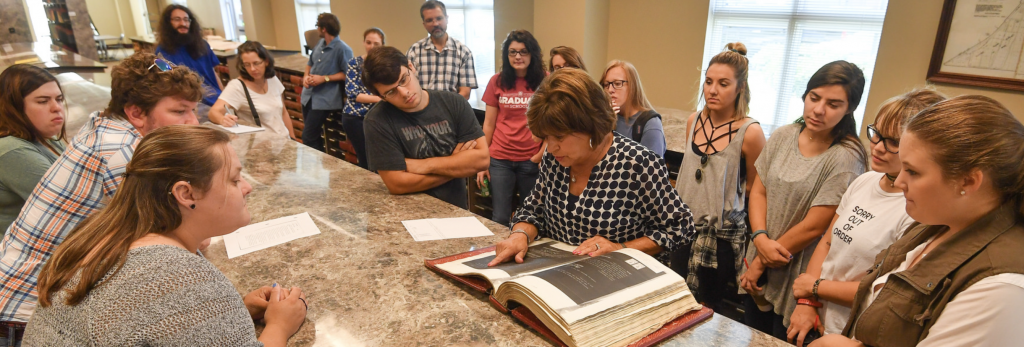
Students search for a deed for Rowan Oak at the Lafayette County Courthouse.
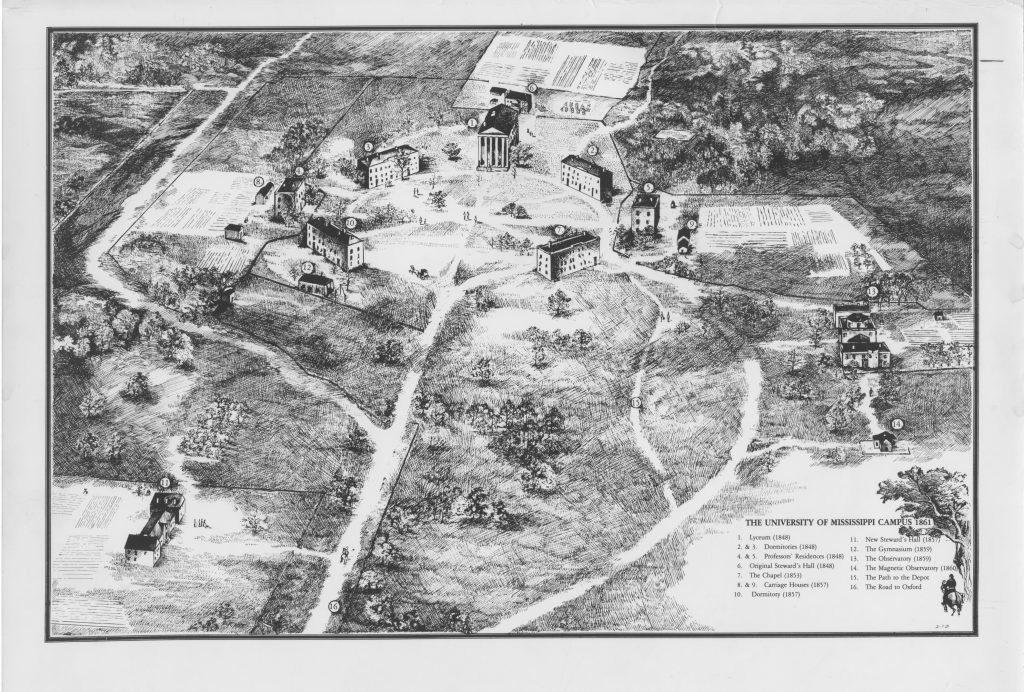
A rendering
of campus in 1861.
